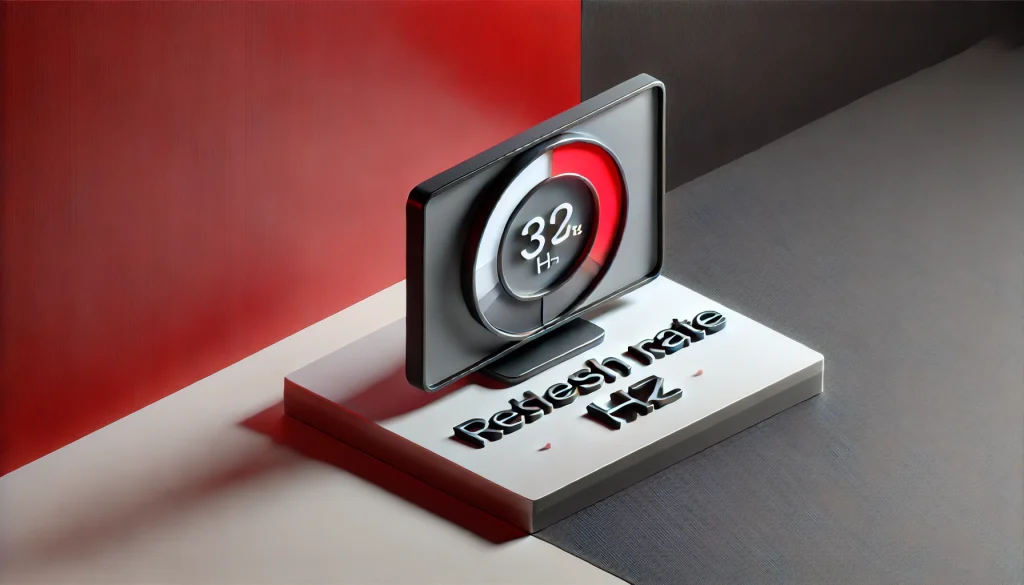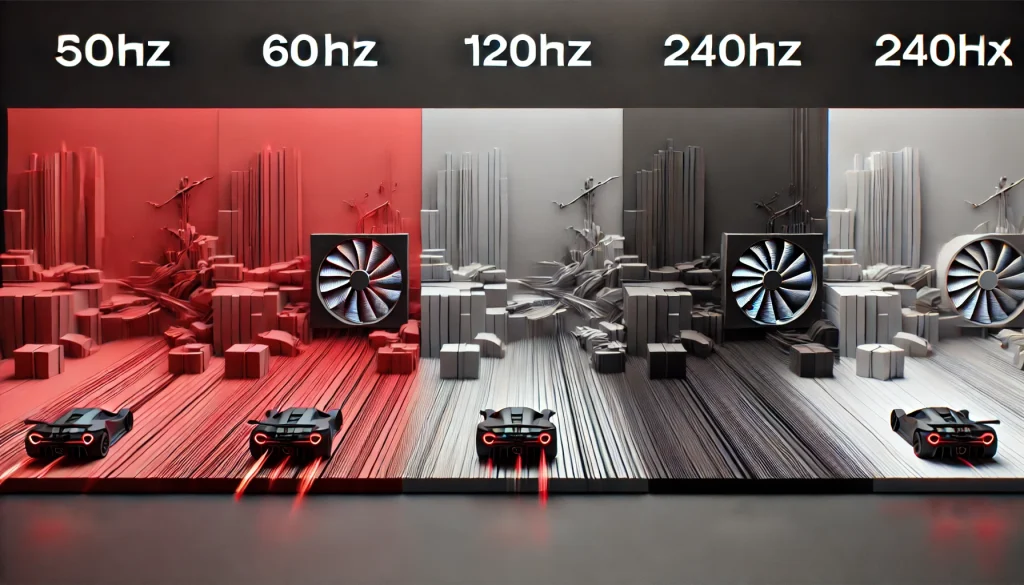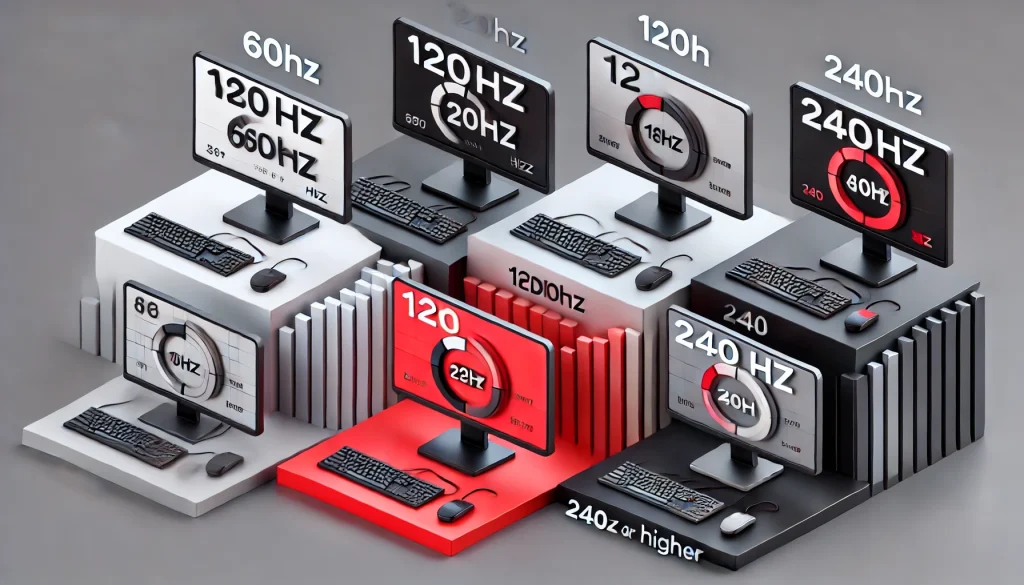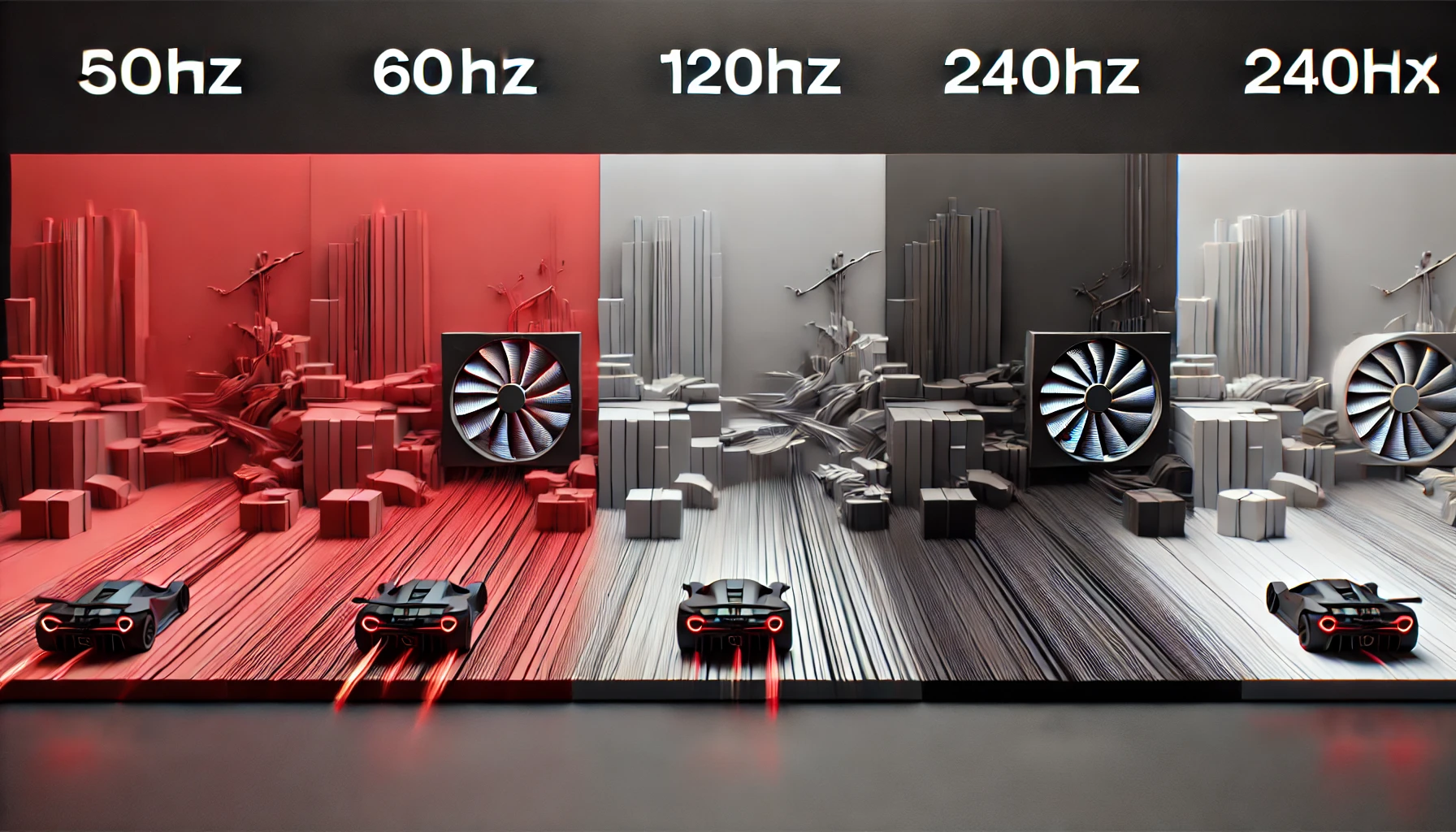
The refresh rate of your display may not be something you think about, but it plays a huge role in your visual experience. It affects how smooth the images appear on your screen, making a difference for gamers, movie lovers, and even casual users. The higher the refresh rate, the more frequently your screen updates its image, which results in better performance and smoother visuals. Whether you’re playing video games or watching an action-packed movie, understanding the refresh rate is key to optimizing your tech experience.
What Is Refresh Rate?
Refresh rate refers to how many times per second a display updates its image. It’s measured in Hertz (Hz). A 60Hz screen refreshes 60 times per second, while a 120Hz screen refreshes 120 times per second. The higher the refresh rate, the smoother the visuals, especially in fast-moving content like sports or action games. Devices with higher refresh rates reduce lag and motion blur, making everything from scrolling on your phone to gaming much smoother.
High refresh rates are not just a luxury for gamers. Today, even smartphones, tablets, and televisions are incorporating refresh rates of 120Hz or higher, creating smoother transitions and better clarity in everyday usage. The difference between 60Hz and 120Hz can be subtle during regular tasks but becomes very noticeable when watching fast-moving scenes or gaming.
How Refresh Rate Affects Your Experience

Gaming
When it comes to gaming, high refresh rates is one of the most important factors for a smooth experience. In competitive gaming, where every millisecond counts, a display with a refresh rate of 144Hz or higher can make the difference between winning and losing. Gamers using monitors with lower refresh rates, such as 60Hz, might experience screen tearing or lag, which affects their ability to react in fast-paced games. With higher refresh rates, animations appear more fluid, and movements are rendered with more precision. This is especially crucial in first-person shooters, racing games, and esports, where fast reflexes are key.
Movie Watching
For movie lovers, higher refresh rates ensure smoother playback of action-packed scenes. Most films are shot at 24 frames per second (fps), but modern displays with higher refresh rates can enhance the viewing experience by reducing motion blur. When you’re watching fast-paced sequences, such as car chases or fight scenes, the difference becomes clear. A display with a 120Hz refresh rate can interpolate frames to make fast-moving objects look sharper, preventing the jarring effect of motion judder or blurring during these intense moments.
General Use
Even for casual use, such as web browsing or using productivity software, higher refresh rates make transitions smoother and more pleasant. Scrolling through long web pages, navigating between apps, or switching between browser tabs feels more fluid on displays with higher refresh rates. While 60Hz is more than adequate for general office work, once you’ve used a display with 120Hz or higher, the difference becomes noticeable. Faster refresh rates reduce screen flickering, which can lead to reduced eye strain over extended periods.
How Refresh Rates Work with Other Components
A common misconception is that a higher refresh rate automatically leads to better performance. However, this depends heavily on the performance of your CPU and GPU. The refresh rate of your monitor dictates how often the screen can update, but it won’t matter if your system can’t output enough frames per second (FPS) to match that refresh rates. For instance, if your GPU can only handle 60 FPS, a 144Hz monitor won’t show the extra frames, resulting in wasted potential.
In gaming, powerful GPUs are required to render more frames, especially when playing graphically demanding games at high resolutions. A balance between resolution and refresh rate is important—while a 144Hz monitor provides smoother visuals, your system needs the graphical power to push out high frame rates in sync with the monitor’s refresh rate. For gamers looking for the ultimate experience, investing in both a high-refresh-rate monitor and a powerful GPU is necessary to fully enjoy the benefits of smoother gameplay and reduced input lag.
Different Refresh Rates and Their Uses
| Refresh Rate | Best For |
|---|---|
| 60Hz | General use, web browsing |
| 120Hz | Watching movies, casual gaming |
| 144Hz+ | Competitive gaming, fast-paced action |
60Hz is perfectly fine for daily tasks such as web browsing, writing documents, or watching standard content. However, if you enjoy watching fast-paced movies or playing video games, 120Hz will offer you much smoother visuals. Gamers who prioritize reaction times and screen fluidity should look at 144Hz or even higher to improve their performance.
Benefits of Higher Refresh Rates
Higher refresh rates have a direct impact on performance and user experience:
- Reduced eye strain: Higher refresh rates are easier on the eyes during extended use, making long hours of gaming or work more comfortable.
- Smoother motion: Fast-moving scenes, whether in movies or games, look clearer and less blurry on displays with higher refresh rates.
- Improved responsiveness: Higher refresh rates, especially in gaming, translates to faster response times and smoother movements, which can be the difference between winning or losing in a competitive match.
- More immersive experience: Higher refresh rates provide an overall better viewing experience, from gaming to movie-watching, offering sharper and more lifelike images.
Choosing the Right Refresh Rate for You

When choosing a display, you should consider how you’ll use it. A 60Hz display is fine for everyday tasks like reading, web browsing, and watching basic videos. However, if you’re a gamer or frequently watch high-definition videos, a 120Hz or 144Hz screen will make a noticeable difference. Competitive gamers should aim for 144Hz or higher for the smoothest gameplay and quickest response times. For content creators or media editors, a high-refresh-rate display combined with high resolution can help reduce strain and improve workflow efficiency.
Additionally, balance is crucial. High refresh rates can only deliver their full potential if paired with a powerful GPU capable of handling high frame rates. Without a balanced setup, even a top-tier 144Hz monitor won’t show its benefits.
Conclusion
Refresh rates are more important than many people realize. They directly impact how we experience everything from web browsing to fast-paced gaming. Higher refresh rates provide smoother visuals, reduce strain, and offer a more immersive experience. Whether you’re upgrading your monitor, TV, or phone, consider your needs and match your refresh rate to your use case. For gamers and movie lovers, investing in higher refresh rates can elevate your entire viewing experience.
Resources
- Tom’s Hardware. Refresh Rate Definition
- RTINGS. What is the Refresh Rate: 60Hz vs. 120Hz
- Intel. Highest Refresh Rate for Gaming
- Trusted Reviews. What is a Refresh Rate
- Jawa. Understanding Refresh Rate on a Monitor

Brijesh Gohil is the founder of Tech Brij, A popular Tech Blog which is focused on Tech tips & Buying Guides. You can follow him on Facebook, Twitter, Google + & LinkedIn.

